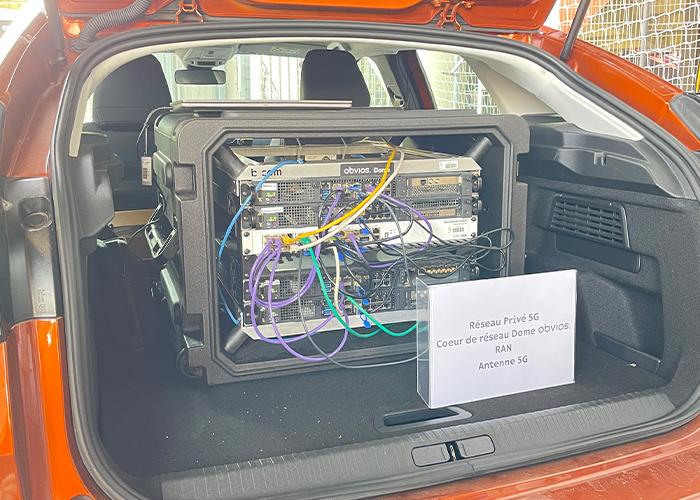b<>com and the CHU de Rennes continue their fruitful collaboration by exploiting the possibilities of private 5G, for the first time outside hospital walls. The experiment consists of setting up a field hospital with a multi-bed intensive care unit in an isolated environment within 24 hours following a flood.
One year after transforming a "classic" care unit into a multi-bed intensive care unit in a record time, b<>com and the Rennes University Hospital are working with their partners to take connected medicine to the next level: the emergency deployment of a field hospital following a natural disaster or any other type of mass casualty event (accident, epidemic, etc.).
This unprecedented out-of-hospital experiment is a real challenge, given the specific characteristics of an intensive care unit: specific connection to alarm reports, permanent visual monitoring of patients, etc. The challenges are to :
- reinforce emergency medical aid and support healthcare establishments in exceptional situations, as in the Covid-19 pandemic;
- rapidly increase the resuscitation capacity of healthcare establishments at strategic points;
- enable medical and nursing teams to carry out their mission in the best possible conditions without exacerbating the stress generated by the crisis situation.
The system deployed in the Roazhon Park parking lot features a temporary care facility with a four-bed intensive care unit, connected to the Rennes University Hospital's information system.
A private 5G network interconnect monitoring equipment and cameras, with the Dome network core from b<>com start-up Obvios. The 5G infrastructure deployed takes the form of an easy-to-transport suitcase.
Inside is the private 5G network core connected to a 5G antenna and routers to which all monitoring devices and cameras are connected.

Easy to use, this solution can be quickly controlled by medical staff, not experts in telecom networks. Thanks to its high level of robustness, it also ensures reliable, secure transmission of medical data, particularly patient care sheets, without any interruption in transmission with Rennes University Hospital.
During this experiment, medical teams can monitor the agitation level of intensive care patients in real-time, thanks to the b<>com *Human Pose* device. Using a camera connected to the private 5G network, the latter can detect risky patient movements and, in the case of an alert, trigger an alarm to the central station and the caregivers' cell phones.
This new exploration of the potential of 5G in the hospital environment is the third experiment of this kind carried out since 2022 and has mobilized a wide range of expertise at the Rennes University Hospital: clinicians, specialists of exceptional health situations, network engineers, e-health and biomedical applications, innovation researcher, etc. It follows the experiments with the connected ambulance and the wireless operating room, carried out respectively as part of the 5G Tours and Engage 5G & Beyond programs.
This experiment is part of the Engage 5G & Beyond research project, funded by France 2030. This project aims to build and operate a network of open, national and sovereign platforms offering 5G services for the transformation of the healthcare, energy, automotive and agri/food industries.
Engage 5G & Beyond project partners: b<>com, CHU de Rennes, EDF, Eurecom, Images & Réseaux, Nokia, Orange.







